The following articles have been chosen to appear as the selected article of the Michigan Highways portal.
May and June 2011
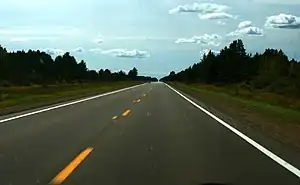
M-28 is an east–west state trunkline highway that almost completely traverses the Upper Peninsula in the US state of Michigan, from Wakefield to near Sault Ste. Marie in Dafter Township. Along with US Highway 2 (US 2), M-28 forms a pair of primary highways linking the Upper Peninsula from end to end, providing a major access route for traffic from Michigan and Canada along the southern shore of Lake Superior. M-28 is the longest state trunkline in Michigan numbered with the "M-" prefix at 290.43 miles (467.40 km). The entire highway is listed on the National Highway System, while three sections of M-28 are part of the Lake Superior Circle Tour. M-28 also carries two memorial highway designations along its route.
Throughout its course across the Upper Peninsula, M-28 passes through forested woodlands, bog swamps, urbanized areas, and along the Lake Superior shoreline. Sections of roadway cross the Ottawa National Forest and both units of the Hiawatha National Forest. Some of the other landmarks accessible from M-28 include the Seney Stretch, Seney National Wildlife Refuge and several historic bridges. (more...)
July 2011
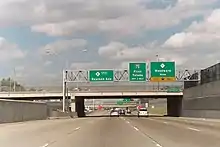
M-8 is a 5.491-mile (8.837 km) state trunkline highway in the U.S. state of Michigan lying within the cities of Detroit and Highland Park. Much of it is the Davison Freeway, the nation's first urban depressed freeway, which became a connector between the Lodge (M-10) and the Chrysler (I-75) freeways.
Named for an English immigrant to the area, Davison Avenue was originally the only street connecting across Highland Park to Detroit. It was rebuilt by the city and Wayne County as a freeway during World War II. The roadway was transferred to the jurisdiction of the Michigan Department of Transportation (MDOT) in 1993 and numbered as M-8. Subsequent changes by the state rebuilt the freeway and extended the M-8 designation to connect to the Jeffries Freeway. (more...)
Recently selected: M-28
August 2011
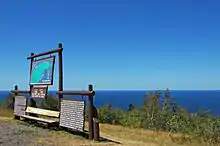
Brockway Mountain Drive is an 8.883-mile (14.296 km) scenic highway in the Keweenaw Peninsula of Michigan just west of Copper Harbor. Drivers can access the road from M-26 on either end near Eagle Harbor to the west or Copper Harbor to the east. The drive runs along the ridge of Brockway Mountain on the Keweenaw Fault and climbs to a height of 1,320 feet (402 m) above sea level, 720 feet (220 m) above the surface of Lake Superior. Several viewpoints along the route allow for views of Copper Harbor, Lake Superior, and undeveloped woodland. On a clear day, Isle Royale is visible some 50 miles (80 km) in distance from the top of the mountain.
Brockway Mountain was named for David D. Brockway, one of the pioneer residents of the area. The road was constructed by the county road commission, the Works Project Administration (WPA) and the Civilian Conservation Corps (CCC) in 1933. It was briefly used as a connection for the parallel state highway after it opened. Since it opened, Brockway Mountain Drive has been recognized nationally and locally in several media outlets for its picturesque qualities, usually in profiles of the Keweenaw County, the Upper Peninsula or other scenic drives. (more...)
September 2011

US Highway 41 (US 41) is a part of the United States Numbered Highway System that runs from Miami, Florida, to the Upper Peninsula. In Michigan, it is a state trunkline highway that enters via the Interstate Bridge between Marinette, Wisconsin, and Menominee, Michigan. Most of the 278.769 miles (448.635 km) of US 41 that lie within the state are listed on the National Highway System. Various sections are rural two-lane highway, urbanized four-lane divided expressway and the Copper Country Trail National Scenic Byway. The trunkline ends at a cul-de-sac east of Fort Wilkins State Park after serving the Central Upper Peninsula and Copper Country regions of Michigan. The highway is included in the Lake Superior Circle Tour and the Lake Michigan Circle Tour and passes through the Hiawatha National Forest and the Keweenaw National Historical Park.
US 41 was first designated in 1926. A section of the highway originally served as part of Military Road, a connection between Fort Wilkins and Fort Howard during the Civil War. US 41 replaced the original M-15 designation on the roadway which dated back to the formation of the state trunkline highway system. Realignments and construction projects have expanded the highway to four lanes in Delta and Marquette counties. (more...)
Recently selected: Brockway Mountain Drive • M-8 • M-28
October 2011
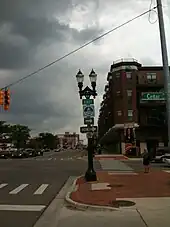
The Capitol Loop that runs through Lansing was commissioned on October 13, 1989. It forms a loop route off Interstate 496 (I-496) through downtown near the Michigan State Capitol complex. The Michigan Department of Transportation (MDOT) has labeled it Capitol Loop I-496 or CL I-496 on some maps. However, unlike other highways in Michigan, it has unique reassurance markers—the signs that serve as regular reminders of the name and number of the highway. It is known internally at MDOT as Connector 496 for inventory purposes. The route follows a series of one-way and two-way streets through downtown Lansing, directing traffic downtown to government buildings. Unlike the other streets downtown, the seven streets comprising the Capitol Loop are under state maintenance and jurisdiction.
The loop was originally proposed in 1986 as part of a downtown revitalization effort. Almost from the beginning before the highway was commissioned, it was affected by controversial proposals. Several suggestions by community leaders to rename city streets in honor of Martin Luther King Jr. were rejected. Meetings beginning in 1999 dealt with rebuilding the streets as part of a downtown beautification project. The project was delayed to accommodate replacing the sewer system under the roadway at the same time. The downtown business community protested the original scope of construction, and the Lansing City Council threatened to cancel the project. In the end, the scope of the project was reduced in scale, and the project was completed in 2005, three months ahead of schedule. (more...)
Recently selected: US 41 • Brockway Mountain Drive • M-8
November 2011
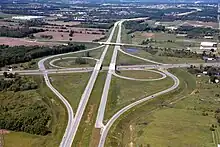
M-6, or the Paul B. Henry Freeway, is a 19.696-mile (31.698 km) freeway that serves portions of southern Kent and eastern Ottawa counties south of Grand Rapids. The freeway is named for Paul B. Henry, a congressman who died in office representing the area. The freeway connects Interstate 196 (I-196) on the west to I-96 on the east while running through the south side of the Grand Rapids metropolitan area in Western Michigan. Each end is in a rural area while the central section has suburban development along the freeway near the connection to US Highway 131.
The freeway was originally conceived in the 1960s. It took 32 years to plan, finance, and build the freeway from the time that the state first authorized funding in 1972 until the South Beltline opened to traffic in November 2004. Initial construction started in November 1997, with the first phase opened in November 2001. The first phase of construction was completed in asphalt, while the second and third phases were built in concrete, costing a total of $700 million. The project was built with two firsts: the first single-point urban interchange in Michigan, and a new technique to apply the pavement markings, embedding them into the concrete to reduce the chance of a snowplow scraping them off. (more...)
Recently selected: Capitol Loop • US 41 • Brockway Mountain Drive
December 2011
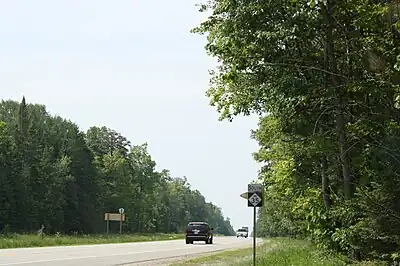
M-35 is a state trunkline highway in the Upper Peninsula (UP). Running for 127.99 miles (205.98 km) in a general north–south direction, it connects the cities of Menominee, Escanaba and Negaunee. The southern section of M-35 in Menominee and Delta counties carries two additional designations. M-35 is the UP Hidden Coast Recreational Heritage Trail, which is a part of the Michigan Heritage Routes system. Along the southern section, the highway is the closest trunkline to the Bay of Green Bay, a section of Lake Michigan and carries the Lake Michigan Circle Tour. The northern section of the highway turns inland through wooded terrain, connecting rural portions of Delta and Marquette counties.
M-35 is an original state trunkline that was first designated in 1919. It was originally intended to run from Menominee in the south to near Big Bay in the north, before turning westward to end at Ontonagon. However, the section through the Huron Mountains in northern Marquette and Baraga counties was never built. Automobile pioneer Henry Ford helped halt this construction to gain favor with, and membership in, the exclusive Huron Mountain Club. Some discontinuous sections were later ceded to local control. The northern segment of the route between Ontonagon and Baraga was retained as a discontinuous segment of the highway; this northern segment was redesignated as another state trunkline. (more...)
Recently selected: M-6 • Capitol Loop • US 41
January 2012
_map.svg.png.webp)
At only 1.06 miles (1.71 km) in length, Interstate 375 (I-375) in Detroit has the distinction of being the shortest signed Interstate Highway that is up to Interstate Standards. Only the unsigned I-878, I-110, and I-315 are shorter. I-375 is the southernmost leg of the Walter P. Chrysler Freeway. It is a spur off I-75 into downtown Detroit to end at the unsigned Business Spur Interstate 375 (BS I-375), better known as Jefferson Avenue. The freeway starts near the Renaissance Center downtown and turns northward. Between 14,000 and 54,000 vehicles use I-375 on average each day. Construction on the freeway started on January 30, 1959, and it opened on June 26, 1964. (more...)
Recently selected: M-35 • M-6 • Capitol Loop
February 2012
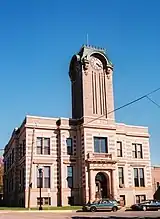
Business M-28 (Bus. M-28) is a state trunkline highway serving as a business route that runs for 4.841 miles (7.791 km) through the downtown districts of Ishpeming and Negaunee. The trunkline provides a marked route for traffic diverting from U.S. Highway 41 (US 41) and M-28 through the two historic iron-mining communities. It is one of three business loops for M-numbered highways in the state of Michigan. There have previously been two other Bus. M-28 designations for trunklines in Newberry and Marquette.
The trunkline was originally a section of US 41/M-28 and M-35. Before the 1930s, the main highways ran through the two downtown areas. US 41/M-28 was then relocated to run near Teal Lake. The former routing had various names over the years. It was designated as an alternate route of the main highways, using both the US 41A/M-28A and Alt. US 41/Alt. M-28 designations before it was designated as Bus. M-28 in 1958. M-35 continued to run through downtown Negaunee along a section of the highway until the 1960s. A rerouting in 1999 moved the trunkline designation along Lakeshore Drive in Ishpeming, and a streetscape project rebuilt the road in Negaunee in 2005. (more...)
March 2012
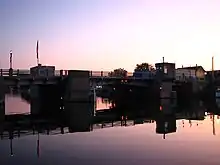
US Highway 23 (US 23) is a United States Numbered Highway that runs from Jacksonville, Florida to Mackinaw City, Michigan. In Michigan, it is a major 362.33-mile (583.11 km) north–south state trunkline highway that runs through the Lower Peninsula (LP). The trunkline is a freeway from the Michigan–Ohio state line near Lambertville to the city of Standish, and it follows the Lake Huron shoreline from there to its northern terminus. The non-freeway section was designated the Sunrise Side Coastal Highway as a part of the Michigan Heritage Route program. Serving the cities of Ann Arbor and Flint, US 23 acts as a freeway bypass of the Metro Detroit area.
The first transportation routes along US 23 in the state were sections of two Indian trails. When the US Highway System was first designated on November 11, 1926, the new highway replaced two previous designations along its route. Since creation, the road has been moved and realigned several times. Through the 1930s and 1940s, the lakeshore routing was created to replace a path that ran further inland through the northern portion of the state. Starting in the early 1950s, various sections in the southeastern and central areas of the LP were upgraded to freeways, bypassing several major cities in the area. These improvements were completed by the end of the 1960s. (more...)
April 2012

M-107 was an east–west state trunkline highway in the Upper Peninsula. Running for 9.576 miles (15.411 km), it connected Lake of the Clouds and the rest of the Porcupine Mountains State Park (PMSP) to M-64 in Silver City. The roadway parallels the Lake Superior shoreline in Ontonagon County, crossing the Little Iron River and passing the PMSP Winter Sports Complex
The designation was created in 1935 as a tribute to the 107th Engineer Combat Battalion. The highway was dedicated on June 13, 1954, to the battalion at a ceremony by Highway Commissioner Charles M. Ziegler. This ceremony was attended by approximately 1,200 people at a highway turnout located along the roadway 4 miles (6.4 km) west of Silver City. A 3-short-ton (2.7 t) boulder was placed on a concrete pedestal with a bronze inscription plaque at the location of the ceremony. The Michigan Legislature named it the "107th Engineer Memorial Road " in 2001. M-107 was transferred from the control of the Michigan Department of Transportation (MDOT) to the Ontonagon County Road Commission on June 4, 2008. This transfer decommissioned the M-107 designation and removed it from the state trunkline system. (more...)
May 2012
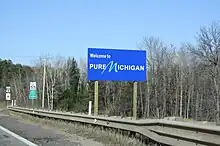
The State Trunkline Highway System is made up of all the highways designated as Interstates, U.S. Highways and State Highways in the US state of Michigan. The system is maintained by the Michigan Department of Transportation (MDOT) and comprises 9,716 miles (15,636 km) of trunklines in all 83 counties of Michigan on both the Upper and Lower peninsulas, linked by the Mackinac Bridge. The system ranges in size from the unsigned Business Spur Interstate 375 (BS I-375) at 0.170 miles (0.274 km) and signed M-212 at 0.732 miles (1.178 km) to Interstate 75 (I-75) at 395.40 miles (636.33 km). Some trunklines in Michigan are maintained by MDOT but bear no signage along the route to indicate this. The remainder of the system is comprised of the Interstate, US and State Highways throughout Michigan. MDOT also maintains all of the business and connector route variants in the system. The system was formed in 1913 with passage of the State Trunkline Act. The first signs were installed in 1919, making Michigan the second state after Wisconsin to do so. (more...)
June 2012

M-185 is a state trunkline highway in the U.S. state of Michigan that circles Mackinac Island, a popular tourist destination on the Lake Huron side of the Straits of Mackinac, along the island's shoreline. A narrow paved road of 8.004 miles (12.881 km), it offers scenic views of the straits that divide the Upper and the Lower peninsulas of Michigan and Lakes Huron and Michigan. It has no connection to any other Michigan state trunkline highways—as it is on an island—and is accessible only by passenger ferry. The City of Mackinac Island, which shares jurisdiction over the island with the Mackinac Island State Park Commission (MISPC), calls the highway Main Street within the built-up area on the island's southeast quadrant, and Lake Shore Road elsewhere. M-185 passes by several key sites within Mackinac Island State Park, including Fort Mackinac, Arch Rock, British Landing, and Devil's Kitchen. Lake Shore Road carries the highway next to the Lake Huron shoreline, running between the water's edge and woodlands outside of the downtown area.
According to the Michigan Department of Transportation (MDOT), M-185 is "the only state highway in the nation where motor vehicles are banned". These restrictions on automobiles date back to the 1890s, and since the ban, only a few vehicles have been permitted on the island other than the city's emergency vehicles. The highway was built during the first decade of the 20th century by the state and designated as a state highway in 1933. The highway was paved in the 1950s, and portions were rebuilt to deal with shoreline erosion in the 1980s. Until 2005, it was the only state highway without any automobile accidents. (more...)
Recently added: Michigan State Trunkline Highway System • M-107 • US 23
July 2012
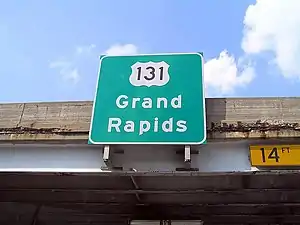
US Highway 131 (US 131) is a north–south United States Highway, of which all but 0.67 miles of its 266.82 miles (1.08 of 429.41 km) are within the state of Michigan. The highway starts in rural Indiana south of the state line as a state road connection to the Indiana Toll Road and becomes a state trunkline highway that runs as a freeway through the metropolitan areas of Kalamazoo and Grand Rapids. It reverts to a surface highway north of Manton before continuing north to its terminus at Petoskey. It forms an important corridor along the western side of the Lower Peninsula, running through rural farm and forest lands as well as urban cityscapes.
The first state highways along the US 131 corridor were designated as early as 1919. When the US Highway System was formed on November 11, 1926, US 131 was created along the route of M-13. Further changes were made, starting in the 1950s, to convert segments of the road to a full freeway. These improvements were completed by the early 1980s; Cadillac and Manton were bypassed in the early part of the 21st century, resulting in the current freeway configuration. Plans to further extend the freeway have either been canceled or placed back under study. Upgrades in the north ceased to be considered in 2000. South of Three Rivers, MDOT is studying possible upgrades to US 131; the preferred alternative as of 2008 was a two-lane bypass of Constantine. (more...)
Recently added: M-185 • Michigan State Trunkline Highway System • M-107
August 2012
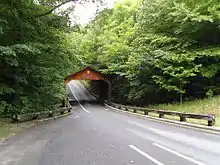
The Pierce Stocking Scenic Drive is a scenic route within Sleeping Bear Dunes National Lakeshore, in western Northern Michigan. The roadway, with its "scenic vistas and gentle curves", is located off state highway M-109 between Empire and Glen Arbor. It runs for 7.4 miles (11.9 km) through forest and dunes areas providing access to scenic overlooks of the Lake Michigan shoreline and the surrounding park land. Interpretive markers along the roadway are keyed to the National Park Service's guide to the drive. Over 80,000 vehicles make the trip in addition to bicyclists, hikers and skiers who use the road each year. The road was built in the 1960s and finished in 1967 by Pierce Stocking. A lumberman with road-building experience, he wanted to share the beauty of the area with others. He operated the facility until his death in 1976; afterwards it was purchased by the National Park Service and added to the park. In the 1980s, a two-year program reconstructed the roadway and added a number of features for visiting tourists. In 2011, the morning show, Good Morning America named the Sleeping Bear Dunes, and Pierce Stocking Drive, as the "Most Beautiful Place in America" after a viewer poll on its website; publicity since the award has increased traffic along the roadway. (more...)
Recently selected: US 131 • M-185 • Michigan State Trunkline Highway System
September 2012

US Highway 16 (US 16), also called Grand River Avenue for much of its length, was one of the principal pre-Interstate roads in the state, replaced by the modern Interstate 96. Before the creation of the US Highway System in 1926, the highway had been designated M-16. Before the late 1950s, US 16 used other roads between Muskegon and Grand Rapids, and then followed Grand River Avenue in a northwest–southeast fashion to Detroit. With the coming of the Interstate Highway System, US 16 was shifted from the older roads to the new freeways. When the freeway was completed, the US 16 designation was decommissioned in the state.
The original pathway along Grand River Avenue was an Indian trail used by the first European settlers to the area in 1701. Later this trail was expanded into a plank road that formed one of the first state highways. Current segments of the roadway are still part of the highway system as sections of M-43 or business loops off I-96; one section of Grand River Avenue in Detroit is an unsigned highway. Grand River is one of five major avenues planned by Judge Augustus Woodward in 1805 that extend from downtown Detroit in differing directions. (more...)
Recently selected: Pierce Stocking Scenic Drive • US 131 • M-185
October 2012

M-123 is a state trunkline highway in the eastern Upper Peninsula that runs north from the St. Ignace area. It is one of only a few highways in Michigan that curve around and form a U-shape. In fact, M-123 has three intersections with only two state trunklines; it meets M-28 twice as a result of its U-shaped routing. M-123 also has a rare signed concurrency with a County-Designated Highway in Michigan; in Trout Lake, there is an overlap between H-40 and M-123. All of M-123 north of M-28 is a Scenic Heritage Route within the Michigan Heritage Route system. That section runs along Whitefish Bay and through the Tahquamenon Falls State Park, providing access to the most voluminous vertical waterfall east of the Mississippi River after Niagara Falls. The road also runs along the Tahquamenon River before turning south to its terminus in Newberry. The highway was first designated before 1936 along a section of its current routing. Sections added since then encompass segments formerly belonging to US Highway 2 (US 2) and M-48. The last changes came to the highway in 1962 and 1963, when the northern end was extended and the southern end was truncated slightly. (more...)
Recently selected: US 16 • Pierce Stocking Scenic Drive • US 131
November 2012

Interstate 75 (I-75) is a part of the Interstate Highway System and runs from Miami, Florida, to Sault Ste. Marie in the Upper Peninsula of Michigan. I-75 enters the state from Ohio in the south, just to the north of Toledo, and it runs generally north through Detroit, Pontiac and Bay City, crossing the Mackinac Bridge and ends at the Canadian border in Sault Ste. Marie. The freeway runs for approximately 395 miles (636 km) on both of Michigan's two peninsulas. In the 1950s, a north–south Michigan Turnpike was proposed as a tolled, controlled-access highway in the Lower Peninsula. After passage of the Federal Highway Act of 1956, this turnpike proposal was shelved as a free Interstate Highway was planned instead. Construction started in 1957, signs went up in 1959, and I-75 was completed in 1973. Since completion, the freeway has been upgraded with the construction of the Zilwaukee Bridge near Saginaw and improved connections to the Ambassador Bridge in Detroit. (more...)
Recently selected: M-123 • US 16 • Pierce Stocking Scenic Drive
December 2012

County Road 492 (CR 492) is a primary county road in Marquette County. The road serves as an alternate route between Negaunee and Marquette. Several historic sites line the roadway as it runs south and parallel to the main highway, U.S. Highway 41 (US 41) through the Marquette Range in the Upper Peninsula. The path of the road runs along near tracks of the Lake Superior and Ishpeming Railroad. The western terminus of the county road is on US 41/M-28 in Negaunee and the eastern end is in Marquette next to Lake Superior.
CR 492 was previously known as the Marquette–Negaunee Road before it was made a part of the state highway system. It was originally designated as a part of M-15 as early as 1917. The superintendent of the Marquette County Road Commission, Kenneth Ingalls Sawyer, painted the first rural highway centerline on the roadway on Dead Man's Curve. The highway was later a part of M-28 before being transferred back to county control. The highway assumed its current form by 2001. The eastern section along Brookton Road in Marquette Township was redesignated as a county secondary highway when a new connection to US 41/M-28 was opened, and the designation was extended along Wright Street on the west and north sides of Marquette. (more...)
January 2013
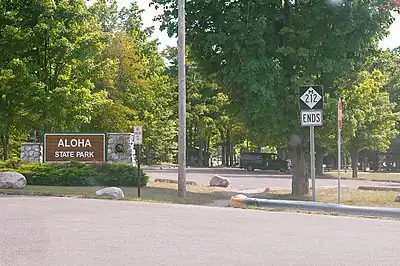
M-212 is the shortest signed state trunkline highway in Michigan. It was designated in order to provide access from M-33 to both the small community of Aloha on the eastern shore of Mullett Lake, as well as to Aloha State Park, where the highway ends. The highway beats out the second shortest, M-168, which registers at 1.022 miles (1.645 km). M-212 even beats out Michigan's shortest business loop, BUS M-32 in Hillman, which comes in at 0.738 miles (1.188 km), only about six thousandths of a mile longer, or about 32 feet (9.7 m). M-212 runs northward away from the park's gate and then turns east through the small community. From there, it runs east through fields and terminates at the intersection with M-33. M-212 was assigned on December 29, 1937, from the intersection with Second Street to an intersection with then US Highway 23 (US 23); in 1940, the state highway department rerouted US 23 and replaced it with M-33. (more...)
February 2013

M-553 is a north–south state trunkline highway in Marquette County. It is the main highway connection between M-35 near Gwinn and the expressway segment of US 41/M-28 in Marquette. In between, the highway runs to the west of the Sawyer International Airport on the site of a former US Air Force base, in the Sands Plains area. The intersection with CR 480, known locally as the Crossroads, is the site of several businesses. North of this location, M-553 runs through some hilly terrain around a local ski hill.
The trunkline was originally CR 553, which dates back to the 1930s and was fully paved in the 1940s; a segment was relocated in the 1950s. The county road was transferred by the Marquette County Road Commission to MDOT jurisdiction in 1998. MDOT assigned most of the former county road the M-553 designation after the transfer was complete. One section that was less than a mile (about 1.3 km) was given the M-554 designation. This trunkline was unsigned by the state. In 2005, control of various roadways was exchanged between the City of Marquette and MDOT, and M-553 was extended through the city. At the same time, M-554 was turned over to the city's jurisdiction. (more...)
March 2013

M-1, commonly known as Woodward Avenue' and called "Detroit's Main Street", runs from Detroit northwesterly to Pontiac along one of the five principal avenues of Detroit. These streets were platted in 1805 by Judge Augustus B. Woodward, namesake to Woodward Avenue. It followed the route of the Saginaw Trail, an Indian trail that linked Detroit with Saginaw. In the age of the auto trails, Woodward Avenue was also part of the Theodore Roosevelt International Highway and the Dixie Highway. Woodward Avenue was the location of the first mile (1.6 km) of concrete roadway in the country. When Michigan created the State Trunkline Highway System in 1913, the roadway was included, becoming part of M-10 by 1919. Later, it was part of US Highway 10 (US 10) following the creation of the United States Numbered Highway System; since 1970, it has borne the M-1 designation. The U.S. Department of Transportation has listed the highway as the Automotive Heritage Trail, an All-American Road in the National Scenic Byways Program. It has also been designated a Michigan Heritage Route by the Michigan Department of Transportation (MDOT) and included in the MotorCities National Heritage Area designated by the U.S. Congress in 1998. The name Woodward Avenue has become synonymous with Detroit, cruising culture and the automotive industry, playing host to the Woodward Dream Cruise annually. (more...)
April 2013
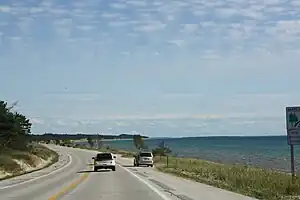
US 2 runs through the Upper Peninsula (UP) in two segments, entering the state at Ironwood and ending at St. Ignace; in between, US 2 briefly traverses the state of Wisconsin. As one of the major transportation arteries in the UP, US 2 is a major conduit for traffic through the state. Two sections of the roadway are included as part of the Great Lakes Circle Tours. The highway runs through rural sections of the UP, passing through two national and two state forests in the process. The route of what became US 2 was used as part of two Indian trails before European settlers came to the UP, and as part of two auto trails in the early 20th century. The highway was originally M‑12 when system was first signed in 1919. Most of M‑12 was redesignated as part of US 2 when the US Highway System was created in 1926. Since the 1930s, several changes have reshaped the highway's routing through the UP, including reroutings that pushed an originally inland alignment closer to the Lake Michigan shoreline. With the creation of the Interstate Highway System, part of US 2 was rerouted to coincide with the new I‑75, before US 2 was truncated to its present form in the 1980s. (more...)
May 2013

Interstate 696 is an east–west auxiliary Interstate Highway known as the Walter P. Reuther Freeway, named for the prominent auto industry union head by the Michigan Legislature in 1971. I-696 is a bypass route, detouring around the city of Detroit through the city's northern suburbs in Oakland and Macomb counties. It connects I-96 and I-275 at its western terminus in Novi with I-94 at St. Clair Shores on the east end. It has eight lanes for most of its length and is approximately 10 miles (16 km) north of downtown Detroit. Planning for the freeway started in the 1950s, and construction started on the first segment in 1961. The western third of the freeway opened in 1963, and the eastern third was completed in January 1979. The central segment was the subject of much controversy during the 1960s and 1970s. Various municipalities along this stretch argued over the routing of the freeway such that the governor locked several officials into a room overnight until they would agree to a routing. Later, various groups used federal environmental regulations to force changes to the freeway. The Orthodox Jewish community in Oak Park was concerned about pedestrian access across the freeway; I-696 was built with a set of parks on overpasses to accommodate their needs. The Detroit Zoo and the City of Detroit also fought components of the freeway design. These concessions delayed the completion of I-696 until December 15, 1989. (more...)
June 2013
.jpg.webp)
Business US Highway 41 (Bus. US 41) was a state trunkline highway that served as a business loop off US 41 and M-28 in Marquette, Michigan, along Washington and Front streets. The streets serve the downtown area of Marquette and are bordered by several commercial properties and businesses. Those two streets originate with the early founding of the city in the middle of the 19th century. Jurisdiction over them was transferred to the city as part of a highway swap that resulted in the decommissioning of the trunkline in 2005. It was also previously co-designated Bus. M-28, mirroring the Bus. US 41/Bus. M-28 designation previously used along Bus. M-28 in Ishpeming and Negaunee. Washington and Front streets had been a part of the state highway system since the 1910s, and a part of the United States Numbered Highway System since 1926. The business loop designation dates back to the 1960s and was removed in 2005. (more...)
July 2013
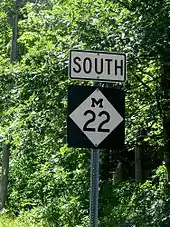
M-22 runs for 116.651 miles (187.732 km) and follows the Lake Michigan shoreline of the Leelanau Peninsula, making up a portion of the Lake Michigan Circle Tour. It also passes through the Sleeping Bear Dunes National Lakeshore. The highway is U-shaped as it rounds the peninsula running through tourist areas in Leland and Suttons Bay in addition to the national park. M-22 is an original trunkline designation dating back to the 1919 designation of the system. Reroutings have moved the highway closer to the water between Suttons Bay and Traverse City. A section of the highway used temporarily even was used for another highway, M-109. The highway was also named a Michigan Heritage Route. The route marker shield is used in marketing by a local business as a symbol of the region. (more...)
August 2013

H-58 is a county-designated highway that runs east–west for approximately 69 miles (111 km) between the communities of Munising and Deer Park in the Upper Peninsula. The western section is routed through Pictured Rocks National Lakeshore, a national park on the southern shore of Lake Superior, and the adjacent Lake Superior State Forest in Alger County. At Grand Marais, H-58 exits the national park and runs through town. The segment running east of Grand Marais to Deer Park in Luce County is a gravel road that connects to H-37 in Muskallonge Lake State Park. A roadway was present along parts of today's H-58 by the late 1920s; initially, this county road was gravel or earth between Munising and Kingston Corners and connected with other roads to Grand Marais. The H-58 designation was created after the county-designated highway system itself was formed in 1970. Initially, only the section from Grand Marais to Deer Park was given the number; the remainder was added in 1972. The last sections to be paved in the 20th century were completed in 1974. The National Park Service was required to build their own access road for the Pictured Rocks National Lakeshore in the initial legislation that created the park. This requirement was rescinded by the United States Congress in 1998, and the park service was authorized to fund improvements to H-58 instead. Paving projects were completed between 2006 and 2010 so that the entire length of H-58 in Alger County is now paved; the section in Luce County is still a gravel road. (more...)
September 2013

US Highway 24 is a United States Numbered Highway in Michigan that is also known as Telegraph Road and runs for 79.828 miles (128.471 km) as a major north–south state trunkline highway from the Ohio state line through Metro Detroit. The highway parallels the Lake Erie shoreline and bypasses Metro Detroit on the west. Telegraph Road connects several suburbs together and passes through the western edge of Detroit before it terminates northwest of Clarkston at an interchange with I-75. The northern part of the highway follows a section of an old Indian trail called the Saginaw Trail that connected Detroit with points further north. The southern sections in the Downriver area south to Monroe parallel telegraph lines from the mid-19th century. These lines gave the road its name. Later this road was added to the state highway system in the early 20th century. It was upgraded and extended during the 1920s to serve as a western bypass of Detroit. The US 24 designation was applied to the highway on November 11, 1926. Since that time, an alternate route was designated between the state line and the Gibraltar area; this highway later became part of I-75. In the 1970s, the northernmost section gained the US 10 designation when that highway was rerouted. That overlap was eliminated in 1986, and US 24 was extended north to Clarkston to replace a segment of US 10. At the same time, a business loop in Pontiac was redesignated for US 24. (more...)
October 2013
.jpg.webp)
M-87 is the designation of a former state trunkline highway in the Lower Peninsula, which prior to 1960 ran east–west between the towns of Fenton and Holly. The highway served as a connector between US 23 and the former routing of US 10, which ran along what is now the I-75 corridor. The highway connected the downtown areas of each community as well as running through then-rural areas of Genesee and Oakland counties. The trunkline was fully paved in 1937 and decommissioned in late 1960, removing it from the system. (more...)
November 2013

US 141 is a north–south United States Numbered Highway in the US states of Wisconsin and Michigan. The highway runs north-northwesterly from an interchange with Interstate 43 (I-43) in Bellevue, Wisconsin, near Green Bay, to a junction with US 41/M-28 near Covington, Michigan. In Michigan, US 141 is an undivided highway that runs through rural woodlands. The highway has two segments in each state; after running through Wisconsin for about 102 miles (164 km), it crosses into Michigan for another eight miles (13 km). After that, it crosses back into Wisconsin for about 14.5 miles (23.3 km) before crossing the state line one last time. The northernmost Michigan section is about 44 miles (71 km), making the overall length 168.82 miles (271.69 km). When the US Highway System was formed on November 11, 1926, US 141 ran from Milwaukee to Green Bay, and one segment of the modern highway in Michigan was originally designated US 102. This other designation was decommissioned in 1928 when US 141 was extended north from Green Bay into Michigan. Michigan has rebuilt the highway in stages over the years to smooth out sharp curves in the routing. US 141 has ended southeast of Green Bay in Bellevue since the 1980s—the southern freeway segment was redesignated as I-43. The section north of Abrams, Wisconsin, was converted to a freeway in the opening years of the 21st century, with an additional divided-highway section opening a few years later. (more...)
December 2013
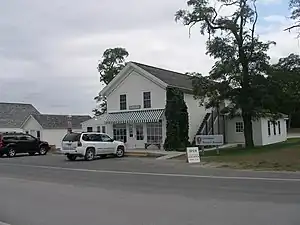
M-209 was a state trunkline highway in the Lower Peninsula. It was located in Leelanau County in the Sleeping Bear Dunes National Lakeshore. Until it was decommissioned, it was Michigan's shortest state highway. M-209 started at M-109 and went 0.543 miles (0.874 km) or just 956 yards (874 m) to Glen Haven. The trunkline ran past such attractions as the restored General Store and Blacksmith Shop. Also located in Glen Haven is the former Glen Haven Canning Co. building. This building was first used as a warehouse and later as a cannery for cherries in the 1920s. It has since been restored as the Cannery Boathouse displaying historic wooden boats used in the Manitou Passage between Glen Haven, Glen Arbor and the North and South Manitou Islands. The northern terminus of M-209 was located in front of the former U.S. Coast Guard Life Saving Station, now restored as a maritime museum. In 1996, M-209's designation was decommissioned, and the road was turned over to the jurisdiction of the Leelanau County Road Commission. Since the transfer, M-212 in Cheboygan County is now the shortest highway in the state. The entire highway is a paved two-lane road. (more...)
January and February 2014

US 8 is a United States Numbered Highway that runs primarily east–west for 280 miles (451 km), mostly within the state of Wisconsin. It connects Interstate 35 (I-35) in Forest Lake, Minnesota, to US 2 at Norway (pictured) in the Upper Peninsula of Michigan near the border with Wisconsin. Except for the short freeway segment near Forest Lake, and sections near the St. Croix River bridge and Rhinelander, Wisconsin, it is mostly undivided surface road. As a state highway in the three states, US 8 is maintained by the Minnesota, Wisconsin and Michigan departments of transportation (Mn/DOT, WisDOT, MDOT, respectively). The highway was originally commissioned on November 11, 1926, with the rest of the original U.S. Highway System. At the time, it ran between Forest Lake, Minnesota, and Pembine, Wisconsin, with a planned continuation to Powers, Michigan. Several changes have been made to the routing of the highway since then. The western end was extended south to Minneapolis before it was truncated back to Forest Lake. Other changes on the east end have moved that terminus from the originally planned end location at Powers to the current location in Norway. Internal Wisconsin and Michigan DOT map files at various times have shown plans to reroute the highway to connect to the original 1926 terminus. US 8's course through the three states has also been shifted to follow different alignments over the years. (more...)
March 2014

US 31 runs from the Indiana–Michigan state line at Bertrand Township north to its terminus at I-75 south of Mackinaw City. Along its 356.5-mile-long (573.7 km) route, US 31 follows the Michigan section of the St. Joseph Valley Parkway as well as other freeways and divided highways northward to Ludington. North of there, the trunkline is a rural undivided highway through the Northern Michigan tourist destinations of Traverse City and Petoskey before terminating south of Mackinaw City. Along its route, US 31 has been dedicated in memory of a few different organizations, and sections of it carry the Lake Michigan Circle Tour (LMCT) moniker. Four bridges used by the highway have been recognized for their historic character as well. The first highways along the route of the modern US 31 corridor were the West Michigan Pike, an auto trail from 1913, and later a pair of state trunklines (the original M-11 and M-58) in 1919. These state highways were redesignated US 31 on November 11, 1926, when the US Highway System was approved. Since then, the highway has been realigned in places. The highway crossed the Straits of Mackinac by ferry for about a decade in the 1920s and 1930s before the Mackinac Bridge was built, connecting to US 2 north of St. Ignace. Later, sections were converted into freeways starting in the 1950s. These segments opened through the subsequent decades with the last one opening in 2003. Future plans by the Michigan Department of Transportation (MDOT) are to finish the St. Joseph Valley Parkway and bypass Grand Haven. (more...)
April 2014
Federal Forest Highway 16 (FFH 16) is a forest highway in the western Upper Peninsula. This road runs through the Ottawa National Forest in Iron, Houghton and Ontonagon counties. The Michigan Department of Transportation (MDOT) has erroneously marked it as H-16 on their official state map. FFH 16 is designated by the US Forest Service (USFS) with maintenance shared by the county road commissions (ICRC, HCRC, OCRC, respectively). Although the MDOT maps would suggest that it is a part of the County-Designated Highway System (CDH system), it is not. The three counties in question do not participate in the system, and the roadway falls in the middle of the G zone for numbering purposes. (more...)
May 2014
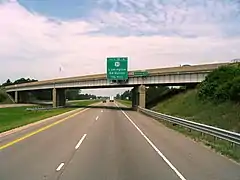
Interstate 96 is an Interstate Highway that runs for approximately 192 miles (309 km) entirely within Michigan from an interchange with US 31 (BUS US 31) near Norton Shores to I-75 near the Ambassador Bridge in Detroit. From Grand Rapids through Lansing to Detroit, the freeway parallels Grand River Avenue, never straying more than a few miles from it. Grand River Avenue originated as an Indian trail before Michigan statehood, and it was later used as a wagon road and state trunkline. Construction of a freeway along the length of the corridor was proposed in the 1940s, and included as part of the Interstate Highway System in the mid-1950s. This construction was started in 1956 and initially completed across the state to Detroit in 1962. I-96 was completed on November 21, 1977. Since then, additional interchanges and lanes have been added in places to accommodate traffic needs. (more...)
June 2014

US 45 is a part of the United States Numbered Highway System that enters the state from Wisconsin south of Watersmeet, ending at an intersection with Ontonagon Street in Ontonagon. In between, the roadway crosses the UP running for approximately 54+3⁄4 miles (88.1 km) through the Ottawa National Forest and parallel to the Ontonagon River. The highway dates back to the 1930s in Michigan. At the time it was extended into the state, it replaced sections of M-26 and M-35. An eight-mile (13 km) segment was significantly reconstructed in the late 1950s, and an alignment change in the 1970s moved the routing of US 45 near Rockland before it was reversed soon afterwards. A segment of roadway that formerly carried US 45 is the site of the Paulding Light, a local phenomenon whose origins were scientifically described in 2010. (more...)
July and August 2014

M-119 is a 27+1⁄2-mile-long (44.3 km) state trunkline highway entirely within Emmet County. The highway follows the shore of Lake Michigan and the Little Traverse Bay, with its southern terminus at US 31 near Bay View, about four miles (6.4 km) east of Petoskey; the northern terminus is at a junction with county roads C-66 and C-77 in Cross Village. North of Harbor Springs, the highway is known as the Tunnel of Trees Scenic Heritage Route. This section of highway lacks a centerline and is known for its scenic beauty. On an average day, between 2,000 and 15,000 vehicles use various parts of the highway. The first highways along the route of the modern M-119 was a section of the original M-13 designated by July 1, 1919. This highway was later redesignated M-131 in late 1926, a designation it held until 1979. During this timeframe, another highway bore the M-119 moniker in the southern part of the state near Paw Paw from the 1930s until the early 1970s. In between 1926 and 1979, M-131 was extended and truncated on both its northern and southern ends at various times. Since the M-119 designation was applied to the current highway, no changes have been made to the routing. (more...)
September 2014
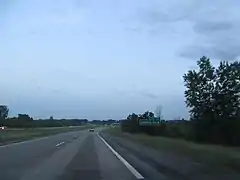
I-69 is a part of the Interstate Highway System that will eventually run from the Mexican border in Texas to the Canadian border at Port Huron, Michigan. It enters Michigan south of Coldwater and passes the cities of Lansing and Flint in the Lower Peninsula. A north–south freeway from the Indiana–Michigan border to the Lansing area, it changes direction to east–west after running concurrently with I-96. The freeway continues to Port Huron before terminating in the middle of the twin-span Blue Water Bridge while running concurrently with I-94 at the border. There are four related business loops for I-69 in the state, connecting the freeway to adjacent cities. The freeway was not included on the original Interstate Highway System planning maps in the mid-1950s, but it was added in 1958 along a shorter route. Michigan built segments of freeway for the future Interstate in the 1960s, and the state was granted additional Interstate mileage in 1968 to extend I-69 north and east to Flint. Later extensions in 1973 and 1987 resulted in the modern highway. The first freeway segment given the I-69 designation opened in 1967, and the last was completed in 1992, finishing Michigan's Interstate System. US 27 previously ran concurrently with I-69 from the Indiana–Michigan state line north to the Lansing area, but this designation was removed in 2002. (more...)
October 2014
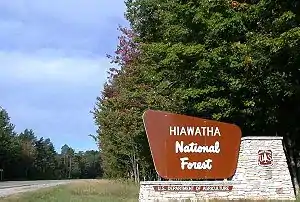
M-94 is a state trunkline in the Upper Peninsula. It runs for about 87 miles (140 km) from K.I. Sawyer to Manistique. From K.I. Sawyer to Shingleton, the highway is signed east–west, and from Shingleton to Manistique, it is signed north–south. M-94 is part of the Lake Superior Circle Tour during where it runs concurrently with M-28. M-94 crosses the Siphon Bridge in Manistique, unique for the fact that the bridge roadway is below water level. M-94 has been realigned several times. It has had its own roadway between the M-28 junctions in Munising and Shingleton. Other changes have flip-flopped M-94 with M-28 between Harvey and Munising and extended it across the former K.I. Sawyer Air Force Base. (more...)
November 2014
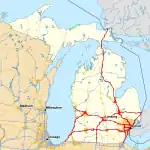
The Interstate Highways in Michigan are the segments of the national Dwight D. Eisenhower System of Interstate and Defense Highways that are owned and maintained by the state of Michigan, totaling about 1,239 miles (1,994 km). On a national level, the standards and numbering for the system are handled by the Federal Highway Administration (FHWA) and the American Association of State Highway and Transportation Officials, while the highways in Michigan are maintained by the Michigan Department of Transportation and the Mackinac Bridge Authority. The Interstates in Michigan have their origins in World War II-era expressways built in the Detroit area. After the system was created in 1956, the state highway department completed its first border-to-border Interstate in 1960. The last highway was completed in 1992, giving Michigan a total of 13 Interstate freeways. The original allotment of mileage to Michigan which would receive federal funding was expanded in 1968, and the United States Congress designated an additional highway in the 1990s that has not yet been built. (more...)
December 2014

Business M-28 (Bus. M-28) was a state trunkline highway in the Upper Peninsula of Michigan. It served as a business route running for 9.010 miles (14.500 km) through the Newberry area. The business loop followed a U-shaped routing to connect downtown Newberry with M-28 south of town. It ran west of the city of Newberry, passing through the community of Dollarville before entering downtown, turning south and ending near the county airport. Bus. M-28 was originally a section of M-28 before the latter was realigned in the late 1930s. The highway carried the M-28A designation before it was redesignated Bus. M-28 in 1950. The trunkline was partially turned back to local control in 1953, and the business loop designation was removed at that time. The section of the roadway in downtown Newberry has carried several different designations in addition to the original M-28. (more...)
Recently selected: Interstate Highways in Michigan • M-94 • I-69
January 2015

M-27 is a north–south state trunkline highway in the extreme north of the Lower Peninsula of the US state of Michigan. The highway runs between I-75 just north of Indian River and Cheboygan, where it meets US 23 and C-66 near Lake Huron. M-27 runs along Mullett Lake and the Cheboygan River, connecting Indian River with Topinabee and Cheboygan. It remains as a relic of the old US 27 which disappeared north of Grayling after being supplanted by I-75, which lies close to old US 27 between Grayling and Indian River. (more...)
Recently selected: BUS M-28 • Interstate Highways in Michigan • M-94
February 2015

M-26 is a 96+1⁄3-mile-long (155.0 km) state trunkline highway running from two miles (3.2 km) east of Rockland to its junction with US 41 in Copper Harbor. It generally runs southwest-to-northeast in the western half or Michigan's Upper Peninsula. From Rockland to Houghton, M-26 runs to the west of US 41 before joining that highway to cross the Portage Lake Lift Bridge (pictured) over the Keweenaw Waterway to Hancock. From there, the highway runs to the east of US 41 through Lake Linden, rejoins US 41 from Calumet to Phoenix. The northernmost segment, which closely parallels the shore of Lake Superior on the west side of the Keweenaw Peninsula, is highly scenic. M-26 previously reached the Wisconsin border, but a section of the highway became US 45. Other changes on the northern end of M-26 incorporated highways that were previously numbered M-111 and M-206 in the Eagle Harbor and Eagle River area. (more...)
Recently selected: M-27 • BUS M-28 • Interstate Highways in Michigan
March 2015
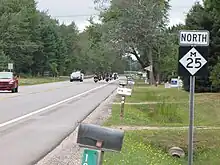
M-25 is a state trunkline highway that follows an arc-like shape closely along the Lake Huron shore of the Thumb in the eastern Lower Peninsula between Port Huron and Bay City. It serves the lakeshore resorts along Lake Huron and Saginaw Bay and generally lies within sight of the lake and the bay. All is surface road and generally scenic, except for the freeway segment near the junction with I-75 and connection into the US 10 freeway. Between Port Huron and Port Austin it is the north–south highway that used to be US 25 before the designation was removed from Michigan. Between Port Austin and Bay City it is an east–west route that appeared on some maps as US 25 and on some maps as M-25. Since the 1970s, when all of US 25 was deleted north of Cincinnati, Ohio, it is now entirely M-25. (more...)
April 2015

The Whitefish Bay National Forest Scenic Byway is a National Forest Scenic Byway that runs along Whitefish Bay in the Hiawatha National Forest. The byway mostly follows Federal Forest Highway 42 through Chippewa County in the Upper Peninsula. The roadway runs parallel to the North Country Trail, a hiking trail that spans several northern U.S. states and provides access to two campgrounds at Monocle Lake and Bay View as well as picnic areas and the Point Iroquois Lighthouse (pictured). As a forest highway, it is maintained jointly by the Chippewa County Road Commission and the U.S. Forest Service. The route of the byway first existed as an earth road by the 1930s; it was improved into a gravel road in the 1940s and paved between the 1950s and the 1980s. The byway designation was created in 1989. (more...)
May 2015

US 25 was a part of the United States Numbered Highway System in the state of Michigan that ran from the Ohio state line near Toledo and ended at the tip of The Thumb in Port Austin. Its general routing took it northeasterly from the state line through Monroe and Detroit to Port Huron. Along this southern half, it followed undivided highways and ran concurrently along two freeways, I-75 and I-94. Near the foot of the Blue Water Bridge in Port Huron, US 25 turned north and northwesterly along the Lake Huron shoreline to Port Austin. Created with the initial US Highway System on November 11, 1926, US 25 replaced several previous state highway designations. Some of the preceding highways followed roadways created in the 19th and the early 20th centuries. It initially was only routed as far north as Port Huron; the northern extension to Port Austin happened in 1933. By the end of the 1950s, the entire route was paved. Starting in the early 1960s, segments of I-75 and I-94 were built, and US 25 was shifted to follow them south of Detroit to Port Huron. A business loop was created when the main highway bypassed downtown Port Huron, and then in 1973, the entire designation was removed from the state. The final routing of the highway is still maintained by the state under eight different designations, some unsigned. (more...)
Recently selected: Whitefish Bay National Forest Scenic Byway • M-25 • M-26
June 2015

M-134 is a state trunkline highway in the Upper Peninsula. It connects I-75 north of St. Ignace with the communities of Hessel, Cedarville and De Tour Village along Lake Huron. East of De Tour, the highway crosses the De Tour Passage on a ferry to run south of the community of Drummond on Drummond Island. It is one of only three state trunklines in Michigan on islands; the others are M-154 on Harsens Island and M-185 on Mackinac Island. M-134 is also one of only two highways to utilize a ferry in Michigan; the other is US 10 which crosses Lake Michigan. Most of the mainland portion of M-134 is also part of the Lake Huron Circle Tour. The current highway was renumbered to use the M-134 designation in 1939. Since then, it was extended eastward to end south of Goetzville in the 1950s, with a further extension to De Tour in the 1950s. The western section was moved closer to the lakeshore in the 1960s. The last change came when M-134 was extended to Drummond Island in 1989. (more...)
Recently selected: US 25 • Whitefish Bay National Forest Scenic Byway • M-25
July 2015
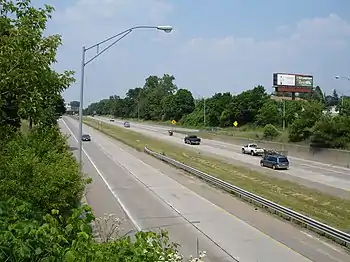
US 127 runs for 214.12 miles (344.59 km), entering from Ohio south of Hudson and ending at a partial interchange with I-75 south of Grayling. Prior to 2002, US 127 ended at I-69 north of Lansing–East Lansing, a total of approximately 83 miles (134 km). US 127 is the primary route connecting Lansing and Central Michigan to Northern Michigan and the Mackinac Bridge. From the south side of Jackson northerly, it is mostly a four-lane freeway. A notable exception is a 16-mile (26 km) stretch from north of St. Johns to just south of Ithaca, where the highway is built as an expressway and speed limits are lower. South of Jackson to the state line, the trunkline is a two-lane, undivided highway with access from adjacent properties. The highway was first designated on November 11, 1926, along a series of existing state highways from Lansing southward toward Toledo. In 1930, the southern end was rerouted south of Somerset in rural northwestern Lenawee County to a course that ran directly south to the Ohio state line; the remainder was renumbered US 223. Starting in the 1950s, the highway was reconfigured to bypass Mason and other communities, converting US 127 into a freeway from Jackson to the Lansing area by the mid-1970s. When MDOT successfully petitioned the American Association of State Highway and Transportation Officials in 1999 to remove US 27 from the state, US 127 was to be extended northward from Lansing to Grayling as the replacement designation. This change was made in 2002, resulting in the current configuration of the highway in Michigan. The United States Congress has designated an additional Interstate Highway, to be part of I-73 that would replace most or all of US 127 through Central and Southern Michigan, but any plans by MDOT to complete this highway were cancelled in 2001. (more...)
Recently selected: M-134 • US 25 • Whitefish Bay National Forest Scenic Byway
August and September 2015

M-77 is a state trunkline highway in the Upper Peninsula that starts in US 2 near Blaney Park north of Lake Michigan. The highway borders the eastern edge of the Seney National Wildlife Refuge and passes through the community of Germfask. At Seney, it overlaps M-28 to cross the Fox River before returning northward. The northern half has been designated as a Scenic Spur of the Lake Superior Circle Tour. M-77 runs along the eastern end of the Pictured Rocks National Lakeshore and terminates in Grand Marais north of H-58 near Lake Superior. Originally designated by 1919, the highway has not been changed much in its history. By the late 1950s, the highway was paved, completing the modern M-77 highway. (more...)
October 2015
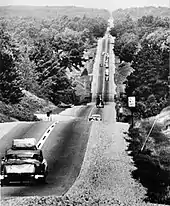
US 27 is a part of the US Highway System that now runs from Miami, Florida, to Fort Wayne, Indiana. In Michigan, it previously entered the state south of Kinderhook and ended south of Grayling. Its route consisted of a freeway concurrency with I-69 from the state line north to the Lansing area before it followed its own freeway facility northward to St. Johns. From there north to Ithaca, US 27 was an expressway before continuing as a freeway to the Grayling area. Created with the rest of the US Highway System on November 11, 1926, US 27 replaced a pair of state highways between the state line and the Cheboygan area. For a time, US 27 even extended from Cheboygan to St. Ignace over the Mackinac Bridge. The highway was converted into a series of freeways starting in the late 1950s. The northernmost section between Grayling and Mackinaw City, bypassing Cheboygan, became part of I-75, and US 27 was truncated to Grayling. Starting in the 1960s, the southern sections were included in I-69. The last section of Interstate in Michigan was completed in 1992 when I-69/US 27 opened southwest of Lansing. In the 1990s, a bypass of St. Johns north of Lansing was built, the last freeway segment of US 27 to open under that designation. On April 16, 1999, the American Association of State Highway and Transportation Officials (AASHTO) approved the removal of the US 27 designation from the state of Michigan; this change was put into place when the highway number was removed from signage in 2002. Former segments of US 27 from its pre-freeway configuration are still state highways in the form of M-27 between Indian River and Cheboygan or the various business routes in the state that previously bore Business US 27 (Bus. US 27) designations. (more...)
November 2015
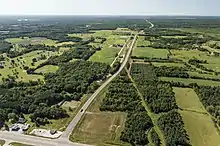
M-231 is the designation of a state trunkline highway in the Lower Peninsula that serves as a partial bypass to US 31 around Grand Haven. This highway was built south of I-96 as an additional crossing over the Grand River. The highway runs from M-45 northward and across the river to a connection with I-96 near the current M-104 interchange. MDOT announced the proposed highway in early November 2006. The new corridor was funded through a Congressional appropriation and a state employment program. The Grand River bridge construction was originally planned for 2010 while the land for the project was being acquired. Other smaller bridges were included in the original plans. Roadway construction was scheduled for 2012. Recent developments in MDOT schedules had construction starting on the Grand River bridge after federal approval was secured with the remainder of the project deferred until additional funding is in place. The road opened on October 30, 2015 as a two lane, limited-access expressway. (more...)
December 2015

A Pure Michigan Byway is the designation for a segment of the State Trunkline Highway System that is a "scenic, recreational, or historic route that is representative of Michigan's natural and cultural heritage." The designation was created with the name Michigan Heritage Route by the state legislature on June 22, 1993, and since then five historic, seven recreational and five scenic byways have been designated by the Michigan Department of Transportation (MDOT), and another two have been proposed. These byways have been designated in both peninsulas of the state. The current name was adopted on December 30, 2014, and it references the Pure Michigan tourism marketing campaign. To be listed as a Pure Michigan Byway, a road must be a state trunkline highway, and it must be nominated through a two-stage process. Candidates are evaluated based on a set of objective criteria by MDOT in a process that can take several years to complete. The criteria include a highway's relationship to sites or districts on the National Register of Historical Places, to recreational areas, or to scenic landscapes. Each candidate must be supported by local stakeholders, including the appropriate local units of government. Each byway has a local organization that produces a management plan for the roadway and the preservation of its surrounding environment. (more...)
January 2016

H-13 is a county-designated highway in the Upper Peninsula that runs north–south for approximately 36.2 miles (58.3 km) between Nahma Junction in Delta County and the Munising area in Alger County. The highway is also signed as Federal Forest Highway 13 (FFH-13), a Federal Forest Highway between Nahma Junction and Wetmore. The roadway runs through rural national forest lands providing access to several campgrounds and parks. The area contains several lakes as well. The Forest Highway System dates back to the 1920s, and an earthen roadway was present along the route of FFH-13 by the 1930s. It was paved by the late 1940s and added to the county-designated highway system in the 1970s. A section of H-13 in Alger County originally continued north to Miners Castle, but the roadway designation was truncated in the first decade of the 21st century. (more...)
Recently selected: Pure Michigan Byway • M-231 • US 27
February 2016
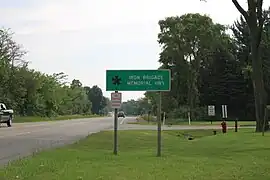
US 12 is a US Highway that runs for 210 miles (338 km) between New Buffalo and Detroit as a state trunkline highway and Pure Michigan Byway. On its western end, the highway is mostly a two-lane road that runs through the southern tier of counties roughly parallel to the Indiana state line. It forms part of the Niles Bypass, a four-lane expressway south of Niles in the southwestern part of the state, and it runs concurrently with the Interstate 94 (I-94) freeway around the south side of Ypsilanti in the southeastern. In between Coldwater and the Ann Arbor area, the highway angles northeasterly and passes the Michigan International Speedway. East of Ypsilanti, US 12 follows a divided highway routing on Michigan Avenue into Detroit, where it terminates at an intersection with Cass Avenue. When US 12 was designated in Michigan on November 11, 1926, it ran along a more northerly course. It entered from Indiana as it does now, but it followed the Lake Michigan shoreline farther north to Benton Harbor–St. Joseph before turning eastward to run through Kalamazoo, Battle Creek and Jackson. In the Ann Arbor area, it followed a more northerly path into Detroit before terminating downtown. In the 1940s and 1950s, sections of the highway were converted into expressways and freeways. Starting in 1959, these freeway segments were renumbered as part of I-94, and in January 1962, US 12 was shifted to replace US 112. Since 1962, the highway has remained relatively unchanged aside from minor truncations in the city of Detroit. US 112 previously had two business loops, both of which were renumbered Bus. US 12 in 1962. In 2010, the Niles business loop was decommissioned, but the one in Ypsilanti remains. One section of the former US 112 was renumbered US 112S for a few years in the 1930s. (more...)
Recently selected: H-13 • Pure Michigan Byway • M-231
March 2016

M-69 is an east–west state trunkline highway in the Upper Peninsula. It connects with US 2 on both ends in Crystal Falls and near Bark River. In between, the highway runs for 65.260 miles (105.026 km) in rural UP forest lands, including an overlap with M-95. Before the creation of the U.S. Highway System, the current M-69 was a portion of M-12. The original M-69 was replaced by US 102 and the M-69 designation was reused on a section of M-12 not replaced by US 2. Further changes to the current highway truncated it for three decades. The eastern section removed from M-69 was given the County-Designated Highway name of G-30 until the change was reversed. In 2002, the historic Paint River Bridge in Crystal Falls was rehabilitated, repairing it and restoring it to the original appearance. (more...)
Recently selected: US 12 • H-13 • Pure Michigan Byway
April 2016

I-296 is an unsigned part of the Interstate Highway System in Michigan. It is a state trunkline highway that runs for 3.43 miles (5.52 km) entirely within the Grand Rapids area. Its termini are I-96 on the north side of Grand Rapids in Walker and I-196 near downtown Grand Rapids. In between, I-296 runs parallel to a section of the Grand River. For most of its length, the Interstate runs concurrently with US 131, which continues as a freeway built to Interstate Highway standards north and south of the shorter I-296. The only section of I-296 to exist independent of US 131 is the northernmost segment within the interchange with I-96 in Walker. The highway was first proposed in the late 1950s and opened in December 1962. After a study related to minimizing confusing signage in 1979, MDOT requested permission from the Federal Highway Administration and the American Association of State Highway and Transportation Officials to eliminate all signage for I-296 and remove the designation from the official state map. The designation is therefore |unsigned, but still listed on the Interstate Highway System route log maintained by the FHWA and used in other official contexts. (more...)
May 2016
M-48 is an east–west state trunkline highway in the Upper Peninsula. It connects Rudyard with Pickford and continues to the far eastern end of the UP. The highway runs for 43.723 miles (70.365 km) through rural parts of Chippewa County, including a section along the county line with Mackinac County. Between 580 and 1,800 vehicles a day use the roadway daily. The highway was designated by 1919 along a route that ran much farther west in the UP. Within its first decade, M-48 was extended to end at a point north of Newberry. Since the 1960s, it has had its current configuration. A section of roadway that was previously used as part of the western end of the highway was redesignated as a section H-40 in the 1970s. (more...)
June 2016
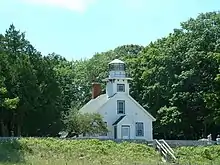
M-37 is a north–south state trunkline highway in the Lower Peninsula. The southern terminus is near the border between Kalamazoo and Calhoun counties at exit 92 of I-94 southwest of Battle Creek. The northern terminus is at the Mission Point Light on Old Mission Point in Grand Traverse County. In between, the highway connects Battle Creek, Grand Rapids and Traverse City. Motorists travel through agricultural land, forests, suburbs and large cities along the way. The section of M-37 on the Old Mission Peninsula was designated what is now a Pure Michigan Scenic Byway in 2008. Originally named the Muskegon, Grand Traverse and Northport State Road, and later the Newaygo and Northport State Road, today's modern highway can be traced back to the 19th century and earlier. The southernmost section between Grand Rapids and Battle Creek parallels an early Indian trail. The modern highway was formed by July 1, 1919 along this segment. By the 1940s, a second section of highway was designated M-37, creating a gap between it and the original section. This gap was eliminated in the 1950s, completing the M-37 corridor in the state. Additional changes to the routing were made through the Grand Rapids area into the 1970s. (more...)
July 2016
The Black River National Forest Scenic Byway is a National Forest Scenic Byway that runs along the Black River in the Ottawa National Forest. The byway follows County Road 513 through Gogebic County in the Upper Peninsula. As a county road, it is maintained jointly by the Gogebic County Road Commission with assistance from the U.S. Forest Service. The byway provides access to several waterfalls and other visitor attractions in the area, including Copper Peak, the tallest ski flying hill in the world. The roadway ends at Black River Harbor, one of only two harbors in the National Forest System. The route of the byway first existed as a wagon road in the 1840s and as a county road in the 1920s. The byway designation was instituted on June 20, 1992, and the byway was dedicated later that year. (more...)
August 2016
M-115 is a state trunkline highway in the northwestern part of the Lower Peninsula. The highway takes a generally northwest-to-southeasterly direction between Frankfort on Lake Michigan and Clare in the central part of the state. The northwestern end is at M-22 next to Betsie Lake; the southeastern end in downtown Clare is at an intersection with Bus. US 127/Bus. US 10. In between, the trunkline runs about 96+1⁄2 miles (155.3 km) through woodlands, including areas that are a part of either the Manistee National Forest or the Pere Marquette State Forest. The highway also passes agricultural areas, several lakes in the region and a state park near Cadillac. M-115 was first designated in the 1920s on the northwestern end near Frankfort. Additional, disconnected sections were designed as part of the trunkline in the 1930s near Cadillac, Farwell and Mesick. All but one of these gaps (Cadillac–Mesick) was eliminated by the end of that decade. The remaining segment was built in the 1950s to unite M-115 into a single highway. The last change came in 1989 when the highway was extended into Clare to its current southern terminus. (more...)
Recently selected: Black River National Forest Scenic Byway • M-37 • M-48
September 2016

M-203 is a north–south state trunkline highway in the Upper Peninsula. It connects McLain State Park with US 41 on each end in Hancock and Calumet. The southern section of highway on the west side of Hancock runs parallel to the Portage Canal before the highway turns northward parallel to Lake Superior near the state park. The trunkline has existed since commissioning in 1933. At first it was a spur from Hancock northward until it was temporarily decommissioned in 1939. This action was reversed, and the highway was extended northward in 1940. Further changes were made to the routing in 1963. (more...)
Recently selected: M-115 • Black River National Forest Scenic Byway • M-37
October 2016

I-196 is an auxiliary Interstate Highway that runs for 80.594 miles (129.703 km) in Michigan. It links Benton Harbor, South Haven, Holland, and Grand Rapids together. In Kent, Ottawa, and Allegan counties, I-196 is known as the Gerald R. Ford Freeway after the 38th President of the United States, Gerald Ford, whose political career began in Grand Rapids. This name generally refers only to the section between Holland and Grand Rapids. I-196 changes direction; it is signed as a north–south highway from its southern terminus to the junction with US 31 just south of Holland, and as an east–west trunkline from this point to its end at an interchange with I-96, its parent highway. There are currently three business routes related to the main freeway, two business loops (BL I-196) and one business spur (BS I-196) that serve South Haven, Holland and the Grand Rapids areas. The current freeway numbered I-196 is the second in the state to bear the number. Originally to be numbered as part of the I-94 corridor in the state, the Benton Harbor–Grand Rapids freeway was given the I-96 number in the 1950s while another Interstate between Muskegon and Grand Rapids was numbered I-196. That I-196 was built in the late 1950s and completed in the early 1960s. The first segment of the current I-196 was opened as I-96 near Benton Harbor in 1962. Michigan officials requested a change in 1963, which reversed the two numbers and the subsequent segments of freeway opened northward to Holland and from Grand Rapids westward under the current number. The gap between Holland and Grandville was filled in the 1970s, completing the highway. (more...)
Recently selected: M-203 • M-115 • Black River National Forest Scenic Byway
November 2016
M-67 is a north–south state trunkline highway in the Upper Peninsula . It connects US 41 in Trenary to M-94 at Chatham. It initially runs east out of Trenary along the Au Train River basin before turning northward and running through the community of Limestone to Chatham. The highway has largely been unchanged during its history, although the highways that connect to M-67 on each end have changed several times. The southern end was extended once, when US 41 was rerouted through Trenary, and the highway was completely paved by the end of the 1950s. At its southern end, M-67 has connected to M-15 and US 41, and at its northern end, it has ended at M-25, M-28 and M-94. (more...)
December 2016

I-496 is an auxiliary Interstate Highway that passes through downtown Lansing. The loop route runs east from I-96 to the downtown area, turning south concurrently with US 127. It passes a former assembly plant used by Oldsmobile and runs along or crosses parts of the Grand and Red Cedar rivers. Construction started in 1963, and the freeway opened on December 18, 1970. Segments south of downtown were built near a historically black neighborhood that dates from the early 20th century. Community leaders opted not to fight the construction of the freeway, instead seeking affordable housing and relocation assistance for displaced residents. The city named the freeway in honor of a former mayor when it opened in 1970, but the local historical society proposed that the state rename it after Ransom E. Olds, the founder of Oldsmobile and the REO Motor Car Company, after his mansion was demolished to make way for the freeway. The Michigan Legislature approved the name "Olds Freeway" two years later. (more...)
January and February 2017
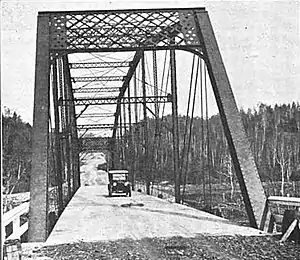
County Road 510 is a primary county road in Marquette County, Michigan, that connects Negaunee Township with the community of Big Bay. The road runs through rural forests as a paved and dirt road in northern Marquette County. It crosses the Dead River near the Hoist and McClure dams and runs for 26.103 miles (42.009 km) before terminating at an intersection with CR 550 south of Big Bay. The road was originally part of the State Trunkline Highway System as M-35. In 1919, the highway was to run through the Huron Mountains in northern Marquette County. A bridge was moved from rural Pennsylvania in 1921 to carry the road over the Dead River. The Huron Mountain Club opposed the highway, and with the aid of Henry Ford, the road's construction was stopped during the 1920s, leaving a gap in the routing through the mountains. In 1939, the state transferred control of M-35 to local authorities, and the Marquette County Road Commission (MCRC) designated it CR 510. Since that time, the bridge over the Dead River has survived a flood in 2003, and it was bypassed in 2010 by a new section of road with another bridge over the river. (more...)
March and April 2017
M-129 is a state trunkline highway in the Upper Peninsula that runs from Cedarville to Sault Ste. Marie. South of Nine Mile Road in Chippewa County (and in all of Mackinac County), M-129 overlays the Michigan Meridian. The section of M-129 that overlays the meridian is named Meridian Road. The highway between M-48 and the northern terminus is a part of the larger Lake Huron Circle Tour. Originally a part of M-12 and US 2, the current roadway was formerly designated M-5 from 1930 until 1939. Two other highways were also previously designated M-129. The first was in the western UP in the late 1920s; it was replaced by M-64. The second was in the Keweenaw Peninsula and was replaced by M-26. (more...)
May and June 2017
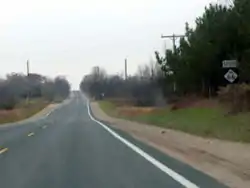
M-66 is a north–south state trunkline highway on the Lower Peninsula that runs from the Indiana state line in the south to Charlevoix in the north. M-66 is the only state highway to traverse almost the entire north–south distance of the peninsula. It starts as a continuation of State Road 9, which provides access to the Indiana Toll Road. The total length is 272.9 miles (439.2 km), which includes 3.4 miles (5.5 km) of freeway between Interstate 94 (I-94) and downtown Battle Creek designated as I-194. One section of the highway is an expressway, a type of divided limited access highway, while the section along I-194 is a full freeway, otherwise M-66 is a two-lane rural highway. The first usage of the M-66 designation dates back to around July 1, 1919, with the rest of the original state highway system. At the time, the highway only extended between Lowell and Lakeview, a route now covered by M-91. The highway has been lengthened in a series of extensions north and south starting in 1925. A rerouting in 1944–45 removed M-66 from its original 1919 routing to replace another highway south of Six Lakes, the change that spawned M-91. The last big extension in 1965 resulted in the modern trans-peninsular highway route. The last modifications were shorter reroutings in the 1970s. (more...)
July and August 2017
_1.jpg.webp)
M-73 is a north–south state trunkline highway in the Upper Peninsula. The highway connects with Highway 55 at the state line near Iron River, crossing the Brule River. It runs through fields and forest, past rivers to a terminus with US 2 west of downtown Iron River. The highway was first designated along with the rest of the state highway system in 1919. Unchanged since its inception, M-73 was completely paved by the mid-1930s. The Brule River bridge was built in 1992 and replaced in 2003.
September 2017

M-64 is a north–south state trunkline highway in the Upper Peninsula that runs for 63.765 miles (102.620 km) through the western part of the state in land that is part of the Ottawa National Forest. The highway connects with County Trunk Highway B (CTH-B) at the state line near Presque Isle, Wisconsin. As it passes through dense forests, M-64 runs along lakes Gogebic and Superior. The northern end is at a junction with US 45 in Ontonagon. The M-64 designation was used on two other separate highways before it was used for the current highway. The first was at the other end of the state near the Ohio state line, and the second was on the Keweenaw Peninsula near Eagle Harbor. The current highway has carried the M-64 moniker since 1930, when it was assigned along two disconnected highways. These two parts were joined into a single corridor soon after. M-64 was one of the last highways in the state of Michigan to be paved in 1961. In the early part of the 21st century, the state replaced the bridge over the Ontonagon River and shifted the highway's northern terminus. (more...)
October 2017
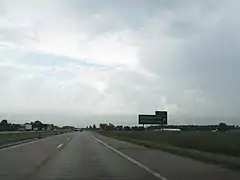
US 223 is a diagonal (northwest–southeast) United States Numbered Highway lying in the states of Michigan and Ohio. The southernmost section is completely concurrent with the US 23 freeway, including all of the Ohio segment. It connects US 23 in the south near Toledo, Ohio, with US 127 south of Jackson. The highway passes through farmland in southern Michigan and woodland in the Irish Hills. Including the concurrency on the southern end, US 223 is 46.34 miles (74.58 km) in total length. The highway designation was created in 1930 out of the southern end of US 127. Three sets of reroutings through Adrian have resulted in the creation of two different business loops through the city. A change proposed in the 1960s and implemented in the 1970s shifted the southern end of US 223 to replace M-151 and then run along the US 23 freeway between Whiteford Township, and Sylvania, Ohio. Since the 1980s, US 223 no longer reaches Toledo, instead feeding into the freeway system for the city. Changes proposed and enacted into law in the 1990s would upgrade the highway as an Interstate Highway. Congress has designated this corridor as part of I-73, although neither state intends at this time to complete the freeway. (more...)
December 2017
H-63 is a county-designated highway in the Upper Peninsula. The highway parallels the I-75 corridor between St. Ignace and Sault Ste. Marie. The road is called Mackinac Trail after the Upper Peninsula branch of an Indian trail used before European settlers reached the area. Originally, the roadway was built as a section of US 2 before being added to the CDH system in the 1970s. H-63 serves as a two-lane alternative to the I-75 freeway across the eastern end of the Upper Peninsula. Between the northern side of St. Ignace, the roadway has connections to two state highways before running concurrently with M-48 near Rudyard. H-63 ends on the south side of Sault Ste. Marie. (more...)
Recently selected: U.S. Route 223 • M-64 • M-73
February 2018
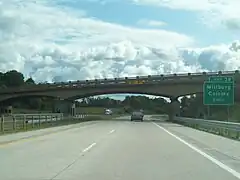
I-94 enters the state south of New Buffalo and runs eastward through several metropolitan areas in the southern section of the state. The highway serves Benton Harbor–St. Joseph near Lake Michigan before turning inland toward Kalamazoo and Battle Creek on the west side of the peninsula. Heading farther east, I-94 passes through rural areas in the middle of the southern Lower Peninsula and runs through Jackson, Ann Arbor, and portions of Metro Detroit, connecting Michigan's largest city to its main airport. Past the east side of Detroit, I-94 angles northeasterly through farmlands in The Thumb to Port Huron, where the designation terminates on the Blue Water Bridge at the Canadian border. The first segment of what later became I-94 within the state, the Willow Run Expressway, was built near Ypsilanti and Belleville in 1941, with an easterly extension to Detroit in 1945. By 1960, the length of I-94 was completed from Detroit to New Buffalo. Subsequent extensions in the 1960s completed most of the rest of the route, including the remaining sections between Detroit and Port Huron which superseded the routing of US 25. The last segment opened to the public in 1972 when Indiana completed its connection across the state line. Since completion, I-94 has remained relatively unchanged; a few interchanges have been rebuilt, a second span was constructed for the Blue Water Bridge, and in 1987, a plane crashed on the freeway during take off from the airport in Detroit. (more...)
Recently selected: H-63 • U.S. Route 223 • M-64
April 2018
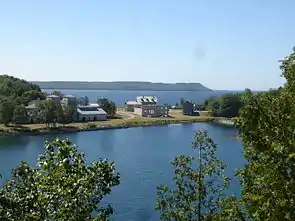
M-183 is a north–south state trunkline highway in the Upper Peninsula. It serves Fayette State Park as an access route from US Highway 2 (US 2). The highway runs through rural farmlands of the Garden Peninsula and next to Big Bay de Noc, a bay of Lake Michigan. The community at Fayette dates back to the 1860s. It has been a state park since the late 1950s, and the connecting road has been a state highway since the 1980s. Before the roadway was transferred to state control, it was part of County Road 483 in Delta County and was transferred because the county wanted state assistance to improve the road.
Recently selected: I-94 • H-63 • U.S. Route 223
June 2018
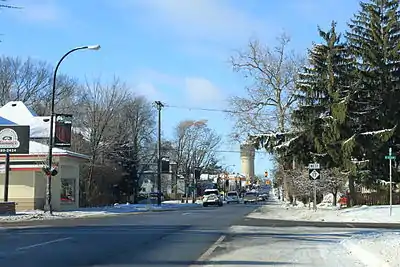
M-17 is a 6.390-mile-long (10.284 km) state trunkline highway connecting the cities of Ypsilanti and Ann Arbor in Washtenaw County. It was once part of a highway that spanned the southern Lower Peninsula before the creation of the U.S. Highway System in 1926. The designation once extended into downtown Detroit, but the eastern terminus was progressively scaled back in the late 1960s to the current location in Ypsilanti. The changes made to the highways in Washtenaw County spawned Business M-17, a business loop for 11 years between 1945 and 1956. (more...)
August 2018
H-33 is a county-designated highway in the Upper Peninsula between Gould City and McMillan that was previously M-135, a former state trunkline highway. The roadway follows Manistique Lakes Road from Gould City at a junction with US 2 near Lake Michigan north to M-28 near McMillan. The northern section of the highway is also called County Road 135 (CR 135) in Luce County. From 1929 until 1960, the road was part of the state highway system as M-135. The northern end of the highway always contained a section that ran concurrently with M-98, another state highway in the area. For a period in the 1950s, M-135 had a different northern terminus separate from M-98's endpoint. A few years before both highways were removed from the highway system, M-135 was moved to use M-98's terminus with M-28. Since the 1970s, M-135 has been a part of the county-designated highway system and assigned the number H-33, a moniker it has borne since. (more...)
October 2018

US 27 previously entered the state south of Kinderhook and ended south of Grayling. Its route consisted of a freeway concurrency with I-69 from the state line north to the Lansing area before it followed its own freeway facility northward toward Grayling; the section between St. Johns and Ithaca was an expressway. Created with the rest of the US Highway System on November 11, 1926, US 27 replaced a pair of state highways between the state line and the Cheboygan area. For a time, US 27 even extended from Cheboygan to St. Ignace over the Mackinac Bridge. The highway was converted into a series of freeways starting in the late 1950s. The northernmost section between Grayling and Mackinaw City, bypassing Cheboygan, became part of I-75, and US 27 was truncated to Grayling. Starting in the 1960s, the southern sections were included in I-69. In the 1990s, a bypass of St. Johns was built, the last freeway segment of US 27 to open under that designation. On April 16, 1999, the AASHTO approved the removal of the US 27 designation from the state of Michigan; this change was put into place when the highway number was removed from signage in 2002. (more...)
February 2020
C-66 is a county-designated highway running about 28 miles (45 km) across the northern tip of the Lower Peninsula. The roadway starts in the unincorporated community of Cross Village in Emmet County at an intersection with M-119 and C-77. It follows Levering Road through rural areas to an interchange with I-75 west of Cheboygan. The eastern terminus is at an intersection with US 23 and M-27 in downtown Cheboygan. The first roadways along what is now C-66 were in place by the early 20th century. Segments were paved by 1936, although some reverted to a gravel surface during World War II. The full roadway was paved by the mid-1950s, and the C-66 moniker was designated on the roadway in the early 1970s. (more...)
March 2020
Portal:Michigan highways/Selected article/March 2020
April 2020
Portal:Michigan highways/Selected article/April 2020
May 2020
Portal:Michigan highways/Selected article/May 2020
June 2020
Portal:Michigan highways/Selected article/June 2020
July 2020
Portal:Michigan highways/Selected article/July 2020
August 2020
Portal:Michigan highways/Selected article/August 2020
September 2020
Portal:Michigan highways/Selected article/September 2020
October 2020
Portal:Michigan highways/Selected article/October 2020
November 2020
Portal:Michigan highways/Selected article/November 2020
December 2020
Portal:Michigan highways/Selected article/December 2020